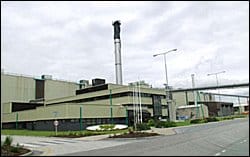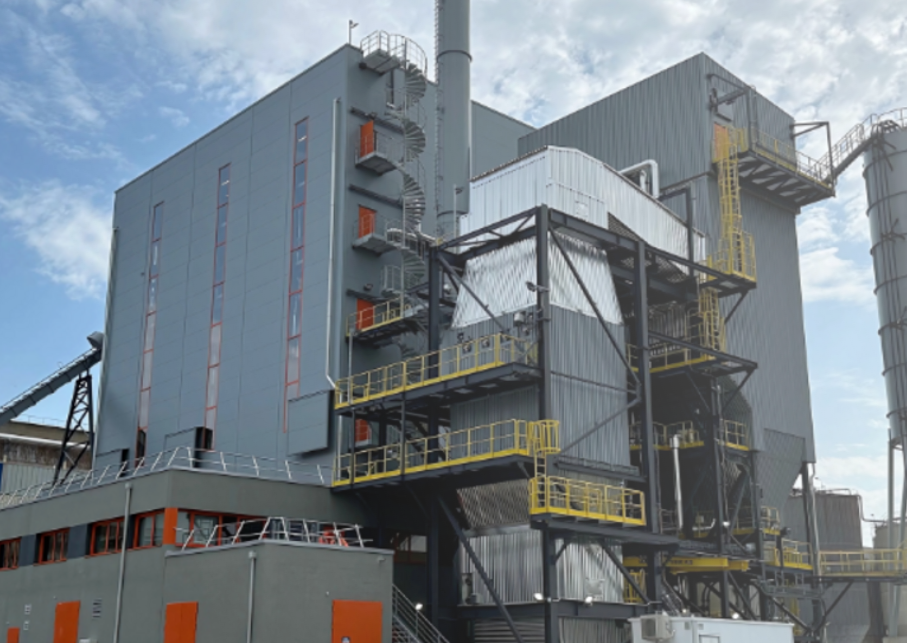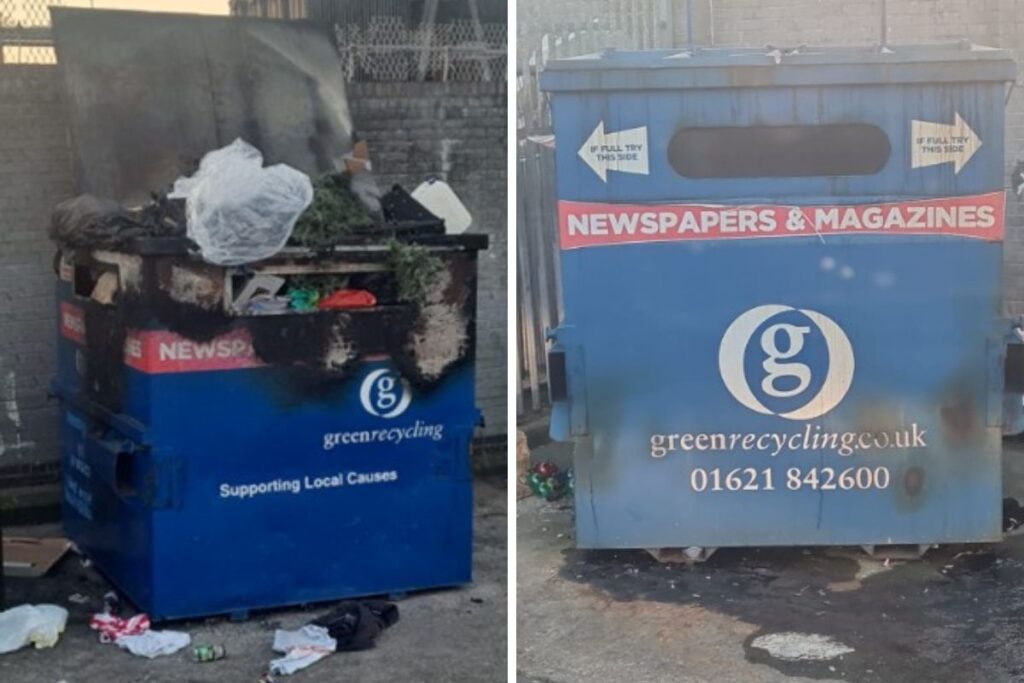The running of the line – known as RCF3 – to produce newsprint from news and pams is a major step forward in the government’s drive to increase the volumes of newspapers recycled within the UK. The 120 million project has been part-funded by a 17 million grant from WRAP – the Waste and Resources Action Programme – as part of its work to divert materials from landfill to recycling.
 Kymmene’s Shotton mill should reach full production capacity in a month’s time Kymmene’s Shotton mill should reach full production capacity in a month’s time |
The investment means that the Deeside plant now has three operational recovered fibre lines with a total consumption of 626,000 tonnes of used newspapers and magazines, with RCF3 using about half this amount. The size of the plant means that UPM-Kymmene is now the world leader in de-inking processing capacity.
An official opening of the plant is expected to take place in the New Year, once full production has been reached and any teething troubles ironed out. But, Shotton managing director Martin Gale told letsrecycle.com that he was confident that “it will take just a short while to reach full production capacity, probably about a month.”
Mr Gale said he was delighted that plant will be operational and emphasized that the company had succeeded in securing enough recovered fibre to feed the paper machines at Shotton. “We have all the supplies we intended to have at this time,” he said. And contrary to earlier considerations by UPM-Kymmene, Mr Gale went on: “There is no need for us to import papers at all.”
However, he confirmed that the import and export of paper might happen on a traditional trading basis. “Over the next number of years it might be that as part of our strong European role as a company that we might like to import and export paper.”
Committed
And, the managing director was upbeat about the performance of the company to the requirements imposed by WRAP in its tender for supporting the project. “We have delivered. I would say that we are doing more than we promised. We are very much committed to doing what was required in the competitive tender, increasing recycling and carrying out environmental improvements.”
WRAP expects the project to increase the UK’s recycling capacity for newsprint by 30%, leading “directly to the collection of newspapers and magazines from an additional 4 million households, many of them in Wales and the North of England”. Jennie Price, chief executive of WRAP, has said that over the next five years “this will mean that over 1.6 million tonnes of newspapers and magazines will be diverted from landfill and used to make a new product of the highest quality.”
Mr Gale said that the company had now contracted with 120 councils for newspapers and magazines, more than double the number it had a year ago. It is thought that some of these contracts may have been held by other newspaper recyclers, but that Shotton is aiming to increase volumes from these authorities to help meet its targets.
Despite the increased collection volumes, Mr Gale emphasized that local authorities needed to remain committed to recycling. “Nobody should go to sleep within local authorities as we have got to continue to recover more paper. We have recovered the cream, but we now need to get wholesale volumes of fresh milk as a nation if we are going to reach a sustainable level of waste management.”
He added that much of this extra paper could end up coming from councils where recycling was not high up the agenda and where authorities had more pressing problems in other areas of their work.
Awareness
The company is particularly proud, said Mr Gale, of its work to raise awareness of recycling among schoolchildren. “We have put a high level of resources into the recycling awareness process with an active programme for 9-12 years olds within local authorities with whom we have a long term supply agreement. This is not just for paper, but for plastics, cans and other materials.”
Looking ahead, Mr Gale said that further investment at Shotton is possible now that the plant had adopted a “single fibre concept”.
He said: “We think that the momentum that is being created by the latest investment at the Shotton mill could lead to other investment in the future. We would very much like to continue the progress we have made with local authorities.”








Subscribe for free